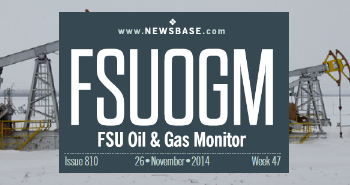Russian refineries see 2.5% dip in oil deliveries in 2024

Crude oil deliveries to Russian refineries declined by 2.5% year on year in 2024 to 271.4mn tonnes (5.45mn barrels per day), while refining volumes fell by 3.1% to 266.5mn tonnes, the Moscow-based Kommersant newspaper reported on February 3, citing sources familiar with energy ministry statistics.
The primary cause of the decline was unscheduled repairs at plants, Kommersant said. Ukraine greatly stepped up drone strikes against Russian refineries over last year, to disrupt fuel supply to Russia’s military and key industries, and deprive the Kremlin of fuel export revenues it can use to finance its war.
Gasoline output dropped by 6.4% to 41.1mn tonnes in 2024, according to Kommersant.
In December, Russian refineries received 23.7mn tonnes of crude, a 1.2% decline from the same period in 2023. Independent suppliers increased refinery feedstock shipments by 21.8% to 27.4mn tonnes, representing 10% of total crude deliveries. Gazprom Neft reduced its refinery shipments by 2.2% to 34.7mn tonnes, Lukoil by 8.6% to 41.5mn tonnes and Rosneft by 7% to 68.5mn tonnes. Neftegas Holding (NNK) raised its refinery supply by 6% to 12.2mn tonnes, while Surgutneftegaz maintained deliveries at the previous year's level of 27.1mn tonnes.
Neither the energy ministry nor major oil companies provided comments for Kommersant’s report. Gazprom Neft CEO Alexander Dyukov has separately stated that the company increased refining throughput last year, achieving a record level of light petroleum product output, which is expected to continue growing in 2025.
The reduction in refinery utilisation was broadly in line with the decline in Russian oil production. Deputy Prime Minister Alexander Novak reported that crude oil and condensate output decreased by 2.75% in 2024 to 516mn tonnes (10.36mn bpd). Primary oil refining dropped by 3.1% to 266.5mn tonnes, while gasoline and diesel production fell by 6.4% and 7.4% to 41.1mn and 81.6mn tonnes respectively. The refining depth improved from 84.1% to 84.4%.
Unplanned maintenance was a key factor affecting fuel production, with disruptions resulting from both equipment failures and drone attacks. Early in 2024, a catalytic cracking unit at Lukoil’s Nizhny Novgorod refinery went offline, and production at the company’s Volgograd refinery was also halted. In March, Rosneft’s Kuibyshev refinery suspended operations, while Kommersant sources reported damage at the company’s Syzran refinery that same month. Additional incidents were reported at Rosneft’s Tuapse refinery, Gazprom Neft’s Moscow refinery, and Slavneft-Yaroslavnefteorgsintez, a joint venture between Gazprom Neft and Rosneft.
In an interview with Russia 24 in December, Novak said the government aimed to stabilise the fuel market and increase production. Refinery output in 2024 was also impacted by export restrictions on gasoline. The ban, initially imposed from March 1 until August 31, was temporarily lifted between May 20 and the end of July, before being reintroduced from September 1. In November, the government exempted fuel producers from the restrictions, allowing gasoline exports to continue until the end of February 2025.
Alexander Kotov, a consulting partner at NEFT Research, told Kommersant that refining volumes this year would depend on the extent of unplanned outages and logistical issues in the rail sector. He noted that in 2024, a shortage of rail tankers led to delays in fuel shipments from refineries, and that railway congestion remained a challenge in early 2025 amid further drone attacks on refining facilities.
Kotov believes that maintaining 2023-level refining and fuel output in 2025 would be considered a success, as it would enable an increase in refined product exports to offset reduced crude exports while ensuring domestic fuel supplies without localised shortages. However, he cautioned that expanding refining capacity alone would not necessarily boost the production of high-octane gasoline, which was a key supply issue in 2024. No new gasoline production units were commissioned during the year, meaning any rise in output would rely solely on higher utilisation of existing facilities.


Follow us online